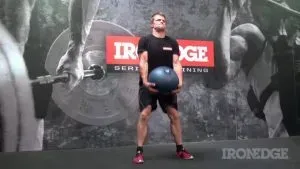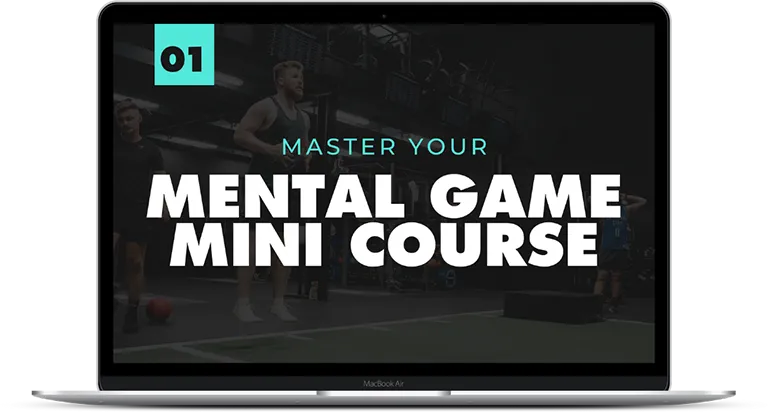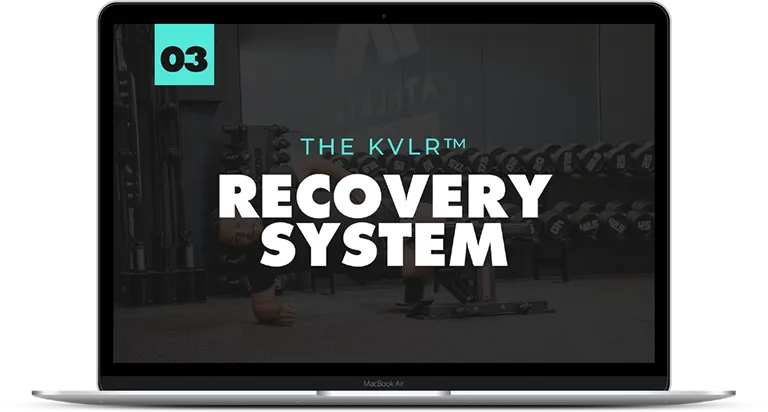Athletes Authority
Latest Blog & Insights

Why The Nervous System Matters For Athletes
Why The Nervous System Matters
When most athletes train, their focus is on improving or altering the physiological capacity of the muscle – whether that be through increasing density, volume, or altering the length.
Similarly, most of the research around adaptations to training usually focus on the physiological changes that occur – changes to the mitochondria; storage of glycogen, presence of enzymes, cross-section of the tissue and the like…
The nervous system gets much less attention. With that said, most experts agree that the initial improvements that ‘newbs’ see from strength training are primarily due to neurological factors (brain-spinal cord-motor neuron), especially the factors surrounding motor ‘learning’.
An arm of strength training that is much less obvious in the literature and blogging world is the issue of IMPROVING the neurological systems performance once ‘newb’ gains have ceased.
If we were to imagine the muscle adaptation process following strength training, the time graph may depict something like this:
The obvious observation relates to the the steep decline in force production (strength) that co-incides with the plateau of ‘adaptations neurales’ aka neurological adaptations.
Imagine if neurological adaptations could continue to be made…
DG Sale (1988) presents this theoretical concept:
Note the increase in force production (strength) that wasn’t apparent in the last graph. That’s because the neurological improvements continued, in absence of any change to the hypertrophy in the muscle.
For a lot of athletes who don’t want to put on muscle this is the goal. For example, we have a boxer who is already teetering on the edge of not hitting her weight class – adding a hypertrophy stimulus to ensure strength gain following a neurological plateau would probably result in her going elsewhere for her training – not ideal for her, or for us as coaches.
As a result, learning how to continue to improve neurological adaptations where they would naturally slow from training is arguably the pinnacle of strength and conditioning coaching… and EXACTLY what we are going to shed light on in this blog.
While methods to training the nervous system have been alluded to, the quality, quantity, accessibility and diversity of these methods is pretty pathetic, and that’s probably because it isn’t a fancy topic to write about, or you aren’t guaranteeing any changes to biceps size or quad girth. Nevertheless, if you’re an athlete who wants to maximise performance, read on.
Within the commonly accepted protocols, neural training is categorised into three strategies:
Plyometric Training
Explosive/Ballastic Training
Circa Maximal Lifting
These methods are what are commonly accepted as improving strength and power without influencing hypertrophy. Although these are valid improvers of strength, and thus, neural adapters, there is so much more to the story than this, and relying on this alone will surely stagnate and plateau quickly.
Understanding Neural Drive
If we are going to talk neural adaptations, we need to get a rudimentary grasp of neural drive – put simply, the variables associated with a muscle contraction.
A motor action can be either voluntary or reflexive, but for the purposes of this article, we’ll keep it contained to the voluntary type. The action or command, derived first from the brain, is sent via the spinal cord to the motor unit which innervates a bundle of muscle fibres. Once the motor unit receives this impulse (think a wave crashing into the shore line), the muscle contracts and produces force.
This neural drive can be further broken down into three primary variables:
Rate: How fast the motor units are activated (speed)
Magnitude: How strong the impulse is (force)
Duration: How long the Vmotor unit is activated for (time)
The best way to comprehend this is to use exercises as an analogy.
Rate is best thought of as a vertical jump – it’s speed dependent. You can’t ‘jump’ slowly – in order to produce enough force to leave the floor you need to do it with speed, otherwise you just end up on your tippy toes.
Magnitude is like your deadlift – you’re looking to produce maximum force through the floor, even if it takes a little longer to do so. Magnitude is load dependent, a maximal effort deadlift will produce a greater magnitude than your first warm up set.
Duration is like a plank, and it is also load dependent. if it’s bodyweight (low magnitude), you can probably hold that for a lot longer than if you had 100kg’s on your back (high magnitude).
The Different Combinations Of Neural Drive
Now that we have an understanding of the variables, it’s important to know how they interact together. There are essentially four different types, which we’ll explain provide examples of below:
High Rate, Moderate-High Magnitude, Low Duration Neural Drive
In this type of drive, the speed at which the motor units are recruited is high, and the amount of those motor units recruited is high as well. With these two variables high, duration must be low. These type of activities include advanced plyometrics, reactive strength exercises, and olympic weightlifting exercises.
High Rate, Low Magnitude & Low Duration
Unlike the above example, low magnitude, high rate neural drive is characterised by things like punching, kicking and lower intensity, extensive plyometric drills like skipping or hopping.
Low Rate, High Magnitude, High Duration Neural Drive
These are your more general maximum strength exercises lasting between 4-12 seconds (think of those maximal deadlifts that just seem to take forever to lock-out). In this example, the neural drive sustains a consistent high magnitude to facilitate overcoming circa max loads.
Low Rate, Low-Moderate Magnitude, Duration Dependent Neural Drive
In this form of neural drive, duration is the predominant variable, facilitating a bout of exercise that lasts from 20-60+ seconds. This may include your more traditional hypertrophy repetition schemes of 15+ reps with a high tempo, or even isometric activity like planking.
Understanding this information is critically important to be aware of how to coordinate these different types of drives within a session and training week. By upskilling yourself on neural drive you may be better equipped at managing:
CNS Fatigue/Overtraining
The planning of training to avoid opposite types of neural drive within a single session
Better select training methods as required by the individual and sport
Both high rate and magnitude incur a CNS stress. Duration in itself isn’t really stressful – in fact high duration with low rate and magnitude incurs almost no stress at all, however, add in high magnitude (you can’t really add rate to high duration) and you’ve got CNS fatigue out the wahzoo.
As a result, the most fatiguing neural drive on the CNS is that of a high-duration and high magnitude (repeat efforts at circa max strength)
*Note, if you’ve never participated in a powerlifting competition, I implore you to do one, and try and get out of bed the next day.
The second most fatiguing neural drive would therefore be rate-dominant high magnitude drive; cleans and box jumps would be an examples.
You probably don’t need to be a genius to realise that low duration, low magnitude work is the least demanding on the CNS, and naturally should follow a period of CNS stress.
As a result, we probably wouldn’t prescribe max effort strength training (high magnitude) with rate-dominant activity (cleans etc) in the same session. This training has been touted as an effective training protocol – otherwise known as a tiered training, but we prefer to break up our training into high-velocity (rate-dominant), high-force (high magnitude) and restoration (low magnitude). When incorporating contrast training methodologies, we’d recommend the more intensive plyometrics on high velocity days and more extensive exercises (landing mechanics, pogos etc) on high-force days.
Identifying neural drive isn’t limited to exercise selection – it can infer potential athlete weaknesses, too.
For example, a lot of athletes, specifically powerlifters we see, are very efficient at producing a duration-dominant neural drive. These athletes are great at ‘grinding’ out reps and are easily able to apply force for a significant period of time (5+ seconds).
Other athletes are much more rate-dominant, they either get the rep, and it looks quick, or they don’t. They can’t ‘grind.’
Naturally, an athlete that is very duration-dominant will get great bang for buck integrating more rate-dominant activity, and vice versa. Obviously keep in mind constraints of the sport – certain sports are rate-dominant (track and field, ball codes etc) while others are duration-dominant (strongman, powerlifting), and many, sit somewhere in the middle.
However, the sport specific demands do not outweigh the individual-specific demands – if an athlete can’t create rate-dominant neural drive, they will benefit highly from this type of activity, regardless of the sport-specificity.
So how can you figure out what type of athlete you are?
Well, it’s quite simple.
If you didn’t read our plyometric training article, you may have missed that all muscle actions are produced via a combination of both elastic action and contractile muscle action. Remember how we mentioned we’d primarily talk about voluntary muscular action? While we have kept within those constraints, it’s important to acknowledge that for sports with high rate of change of muscle velocity (from eccentric to concentric), the more involved the reflexive component, and if you’re any good, the more likely it is you are this type of athlete.
For example, I see lots of rate-dominant sprinters.
And I also lots of magnitude dominant front row rugby players.
When maximising performance, it’s important to figure out where the athletes deficits lie – and construct a training program around improving these weak links.
The front row forwards who we’ve helped dramatically increase their rate of force development are much better athletes now then what they were when they first started with us… as ‘grinders.’
Conversely, rate-dominant runners can dramatically increase their force production by learning to increase high-magnitude neural drive.
Stay tuned for coming articles where we start to put this all together.
Want to stop choking in the moments that count the most? Discover how to optimise your thinking to compete like a champion. Click here to learn more.
Our resources

Master your mental game Mini Course
Discover the mindset strategies of the World’s Greatest Athletes so you can turn your mind into a weapon of performance.

THE ATHLETES AUTHORITY RECOVERY SYSTEM
Performance = fitness – fatigue. Reduce your fatigue and recover faster with our 3-step recovery system.
SYDNEY LOCATION
© 2023, Athletes Authority | All Rights Reserved
Website & Marketing Powered By Gymini

